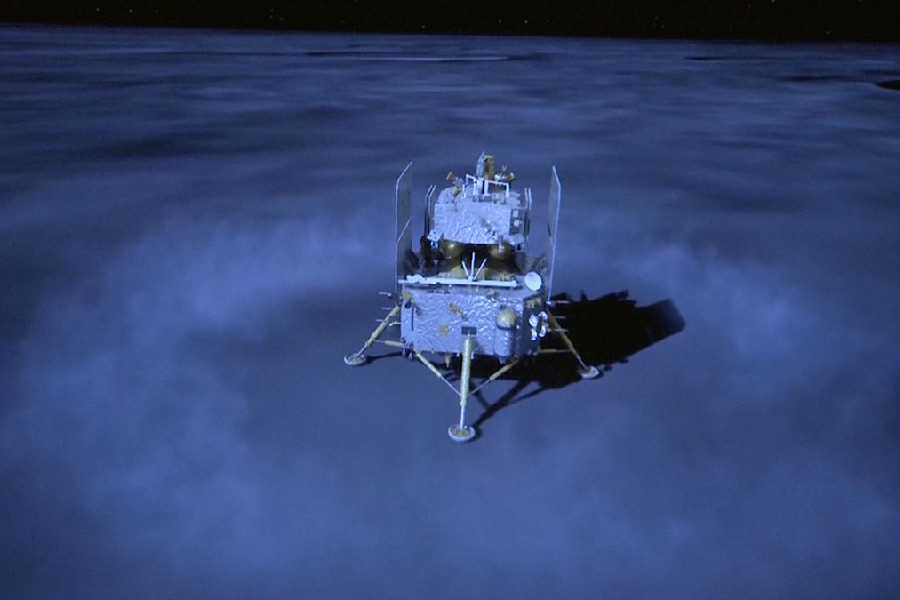Search here

04-Jun-2024 , Updated on 6/4/2024 10:18:14 PM
China’s Chang’e-6 probe successfully lands on the moon
It has now been years since China first launched the Chang’e-5 mission to the moon and today the Chang’e-6 was launched into space as the country tries to get rock samples from the moon’s far side. Chang’e-6 is another name of the Chinese moon goddess and it not only boasts of having landed on the far side of the moon but also mission that is set to bring back samples to the Earth. This historic mission is expected to give out lots of information about the surface of the moon and the various unknowns of our fellow celestial body.
The Mission Overview
The Chang’e-6 mission is one of the subprojects of the Chinese Chang’e lunar exploration program based on the moon to research its surface and surround space conditions. Similar to Chang’e-4, Chang’e-6 is the second mission of the Chinese lunar exploration program that made the successful soft landing on the far side of the moon, which has not been explored before and is still a mystery to scientists to date.
The near side of the moon is the portion of the moon that is visible from Earth, while the far side of the moon is permanently hidden from view from earth, and has been termed as the dark side of the moon because of this reason. These makes the far side of the moon scientifically exciting and interesting, but their exploration is technically demanding.
Arriving in the Far Side
Chang’e-6 touched down at the Apollo Basin crater located in the bigger South Pole-Aitken (SPA) Basin early Sunday June 2, Beijing Time. This basin is the one of the biggest and the oldest basins on the moon territory, that is why it is interesting for researchers. This fruitful exploration in this difficult area proves China’s ability in space travel.
Collecting Lunar Samples
Chang’e-6 is designed to carry out the sample collection campaign with the samples collected sent back to the Earth. The rover in two days collected lunar rocks and soil sample from the Apollo Basin. On June 4, at 7:38 a.m. Beijing Time, the experiments were deployed in lunar orbit by the ascender module for the planned progression of the mission.
These samples collected are very important in looking at the geological and physical history of the moon. These rovers will enable the scientists to identify the formation and character of the lunar surface and what was happened to the moon in the past few billion years.
Stunning Imagery
During the mission, the Chang’e-6 lander has submitted stunning pictures of the surface of the moon to earth. These shows below are true-eye images of the far side of the moon as captured by CNSA or the China National Space Administration. The resolution pictures depict the surroundings of the lander with a gray dusty surface having small pebbles. They also contain the view of the Chinese flag on the lunar surface which is more symbolic of a Chinese accomplishment.
A Journey back to earth
Next, after the release of the samples into lunar orbit, the subsequent crucial procedure is the transfer of the samples to the Chang’e-6 orbiter which has been positioned in space around the moon. A rather delicate operation is carried out in order to ensure a safe transfer of the samples; this involves specific orbital maneuvering. Once this is done the sample canister will be sent back to Earth with the planned landing date of 25th June.
If accomplished then this will be the first time samples from the far side of the moon have been delivered to the Earth. (The return of these samples will be a historic event because these samples are taken from the unexplored region of the moon and the researchers will get these material samples from this place.
Future Missions and Ambitions
China has more planned on the list of Lunar Program and Chang’e-6 is not the last mission. For more CNSA’s future missions, China is targeting the lunar south pole. The subsequent lunar missions, namely Chang’e-7 and Chang’e-8, are planned for 2026 and 2028 correspondingly. Chang’e-7 mission is to find water ice at the lunar south pole, while Chang’e-8 is to test the utilization of resources on the moon like water ice for human missions.
These missions are part of the long-term strategy which China has set for itself in the field of space exploration, including the lunar expedition with people by 2030. In addition to lunar and pole mining, China wants to create technologies to use resources on the moon for the long-term habitation of the moon.
The Significance of Chang’e-6
The Chang’e-6 accomplished is one of the significant milestones of reaching the moon with future exploration plans. That shows the enhancement of the nation’s technical talent and its contribution to improve the lunar studying field. Landing on the side of the moon which has not been accessed before and collecting samples, China helps scientists to study the previous history of the moon and its structures.
Also, the mission emphasizes the aspect of the political system to foster cooperation from different countries in space exploration. The data and samples returning from moon by Chang’e-6 will be available for our worldwide partners in scientific research that will make us more united and advance the global understanding of the Moon.

Student
An MBA in finance imparts and improves management aptitude, inventive ability, critical thinking ability, and so forth. It offers a real-time experience that fabricates a staunch career foundation for students and working professionals. It helps them to thoroughly understand the financial sector.
Join Our Newsletter
Subscribe to our newsletter to receive emails about new views posts, releases and updates.
Copyright 2010 - 2025 MindStick Software Pvt. Ltd. All Rights Reserved Privacy Policy | Terms & Conditions | Cookie Policy